Some fish produce millions of eggs. Insects can repopulate at astonishing speed. Some birds lay more eggs than it seems possible for them to handle. And even some mammals have litters so large they are hard to believe!
While around 97% of human births involve a single baby, many species prefer to make the most of their pregnancies through maximum production, having dozens, hundreds, thousands, or even millions of babies at a time. Here, we count down the top eight impressive animals that have the most babies.
8. Gray Partridge

The partridge can lay up to 22 eggs at a time, with an average of 11 eggs per clutch.
©Voodison328/Shutterstock.com
Gray partridges (Perdix perdix) are chunky chicken-like gamebirds that were introduced to North America from Europe in the early 20th century. Although these birds have short lifespans (average life expectancy for a partridge in the wild is around 1.8 years), they make up for it by having lots of babies.
Gray partridges can lay up to an impressive 22 eggs at a time. While partridges are monogamous and mate for life, the female does the incubating while the male remains near the nest. The unmarked, buff-colored eggs are incubated in nests on the ground for 21-26 days before hatching. Since partridges are precocial birds, the babies hatch with their eyes open and can move around soon after they leave the egg.
7. Naked Mole Rat

Naked mole rats live up to 10 times longer than other similarly sized rodents.
©Neil Bromhall/Shutterstock.com
The naked mole rat (Heterocephalus glaber) gets last place when it comes to beauty, but they do excel in one area: procreation. These furless creatures can have litters up to five times per year, with each litter containing up to 30 babies.
If that isn’t impressive enough, naked mole rats continue to have babies indefinitely. Unlike other mammals, they don’t experience a drop in fertility as they age. And these rodents far outlive their similarly sized counterparts. Naked mole rats in captivity have lived up to 41 years.
Naked mole rats live in colonies, and only one female (the “queen”) reproduces. However, even with only one fertile female, the rats’ long lives and big litters mean lots of babies. One naked mole rat queen in a laboratory produced more than 900 pups in her 12-year tenure at the lab.
6. Tailless Tenrec

Many tenrec species are endemic to Madagascar.
©Dimitri Coutandy/Shutterstock.com
Native to Madagascar, the tailless tenrec (Tenrec ecaudatus) is the largest species of the tenrec family. They also have the largest (literal) families of any mammal. Tenrecs have one to two litters per year, and each litter can contain up to 32 babies.
Most mammals wouldn’t be able to support this many babies. Mammal litter sizes are limited by how many babies an animal can nurse. As a general rule, the maximum number of babies a mammal can have is dictated by how many nipples they have. The number of nipples determines the maximum litter size, with the average litter size being half of that number.
However, tenrecs have a secret weapon. Female tenrecs have 36 nipples to feed their many babies. Since they live approximately 10 years and can reproduce at as young as six months old, a fertile tenrec could potentially have around 640 babies in her lifetime.
5. Hawksbill Sea Turtle
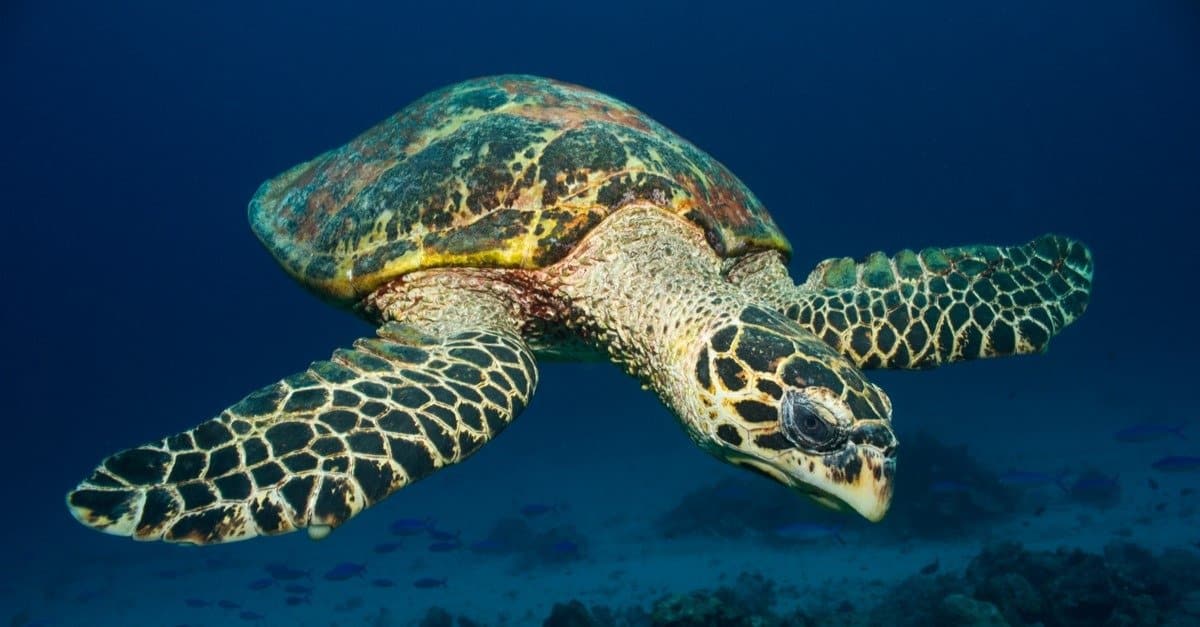
Hawksbill turtles can weigh up to 150 pounds.
©John Back/Shutterstock.com
Much like their namesake bird, hawksbill sea turtles (Eretmochelys imbricata) have a narrow, pointed beak. Unlike hawks, however, these turtles are critically endangered, with an estimated 20,000 nesting females left in the wild. While the females can nest three to six times per season, they only nest every two to four years.
However, hawkbills make up for this infrequent nesting by making the most of each go. These turtles lay up to 200 eggs in a clutch, returning to the beaches where they themselves hatched to lay their eggs. Unfortunately, few of these baby turtles survive to adulthood to procreate themselves. Estimates of survival range between one in 1,000 to one in 10,000. Ones that do survive reach maturity around 20-35 years old and can live to be 60 years old or more.
4. Seahorse
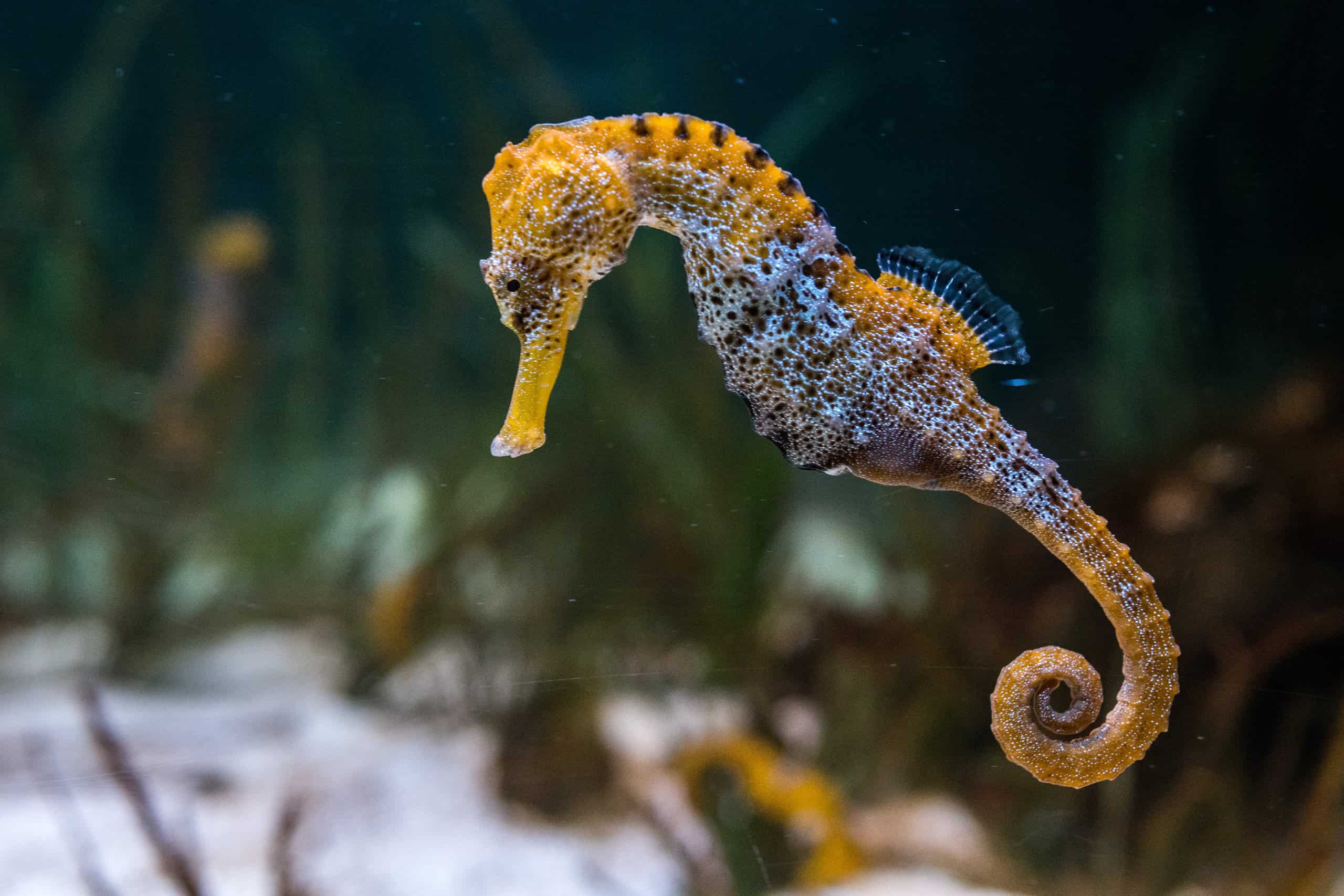
Male seahorses have a pouch that functions similarly to a human placenta.
©Marcos del Mazo/Shutterstock.com
When it comes to seahorses, parenting is done a little differently. Instead of females being the primary caregivers, male seahorses do the brunt of parenting. Male seahorses have pouches that develop and function much like a human placenta. The female deposits her eggs into this pouch, where they are incubated by the “pregnant” male seahorse.
How many eggs can this pouch hold? Up to 1,000. Gestation varies between each of the 46 different seahorse species but is generally between 10 days and a month. Once gestation is complete, the baby seahorses are ejected fully formed into the water. After they are born, the 1,000 babies are on their own and completely independent. Like many other baby fish, they are extremely vulnerable to predators at this young age and have a survival rate of less than 0.5%.
3. American Bullfrog
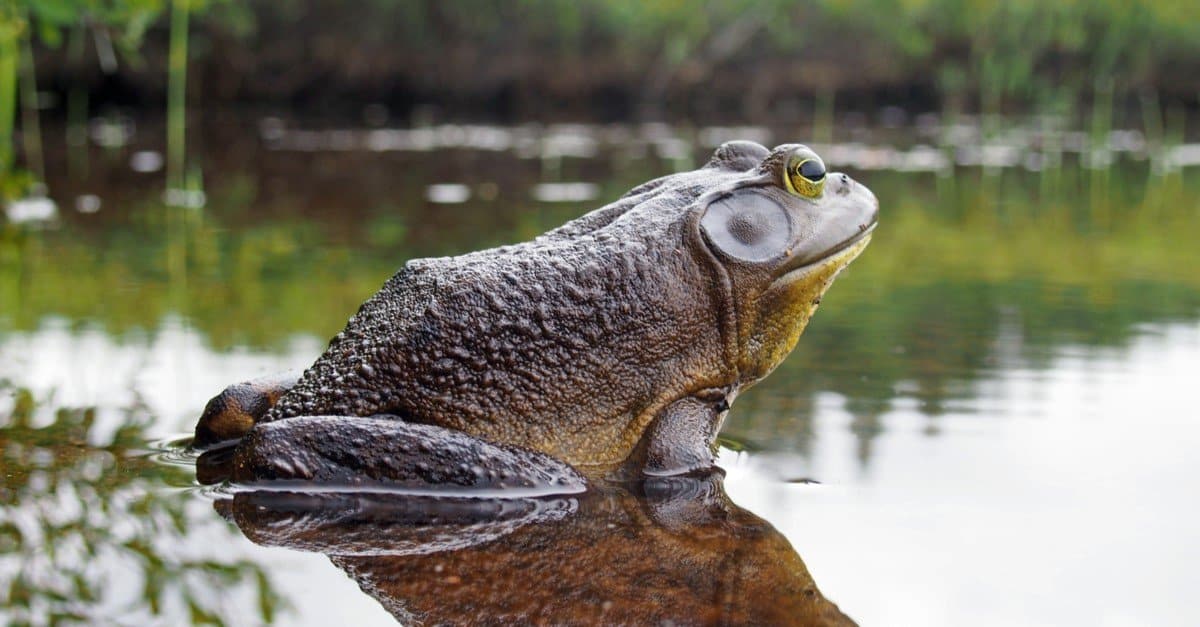
Sheets of bullfrog eggs can span 5-10 square feet of surface area on ponds.
©Christian Ouellet/Shutterstock.com
Found across much of the United States, the American bullfrog (Lithobates catesbeianus) is named for the loud noises it makes during breeding season that sound like a bellowing bull. In addition to making lots of noise, these frogs also make lots of babies. And by lots, we mean tens of thousands.
Bullfrogs lay up to 20,000 eggs during the summer breeding season in ponds, swamps, and lakes. The tiny black eggs are covered in a translucent protective jelly and form a floating sheet atop the water. These expansive sheets of jelly and eggs can cover areas of over 10 square feet.
Before hatching, tadpoles survive on the food stored in the jelly. After four or five days, the tadpoles hatch and begin to eat algae in the water. Metamorphosis into frogs varies on region and can take from two months to three years, depending on temperature.
2. Driver Ants
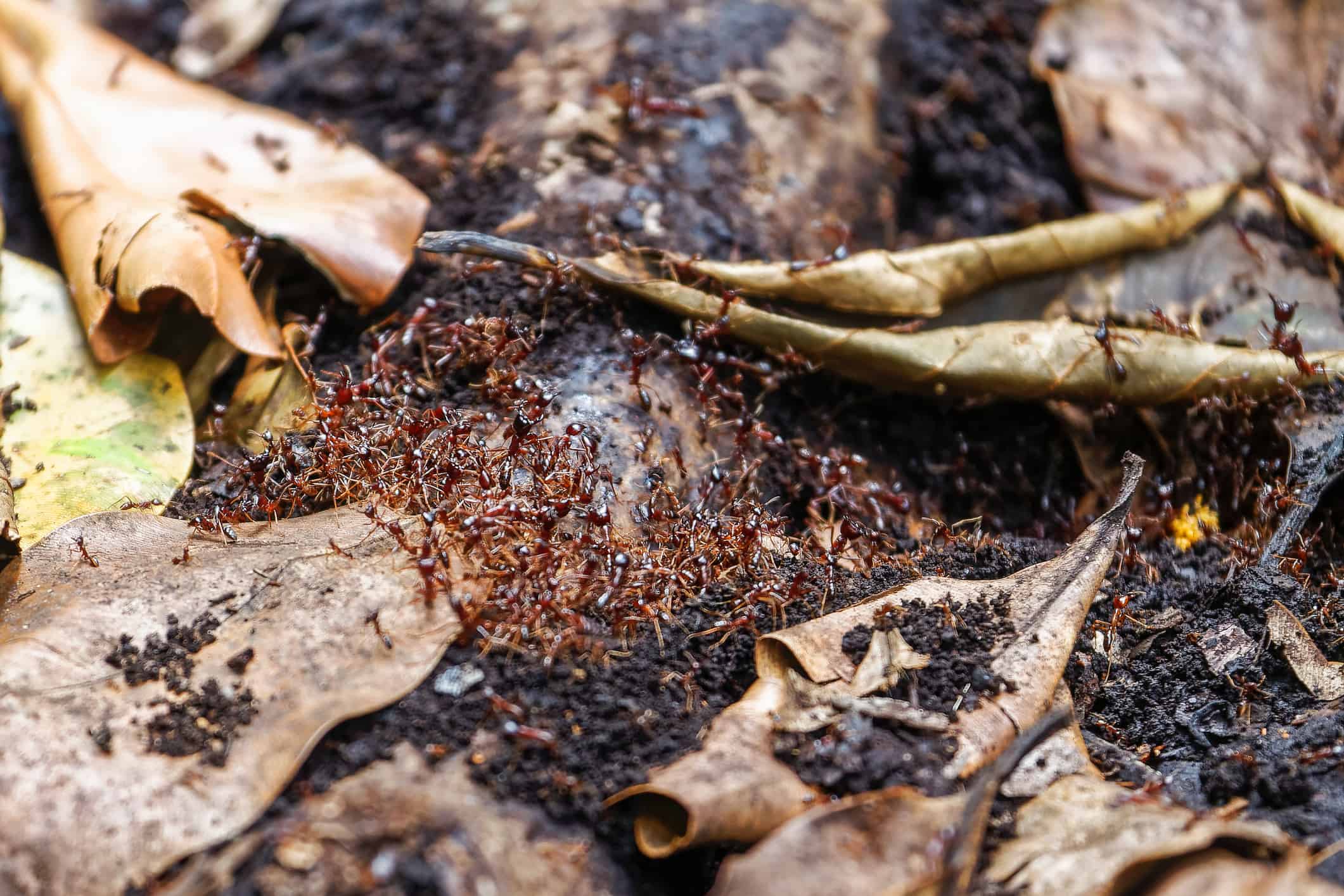
Driver ants live in huge colonies comprised of millions of ants.
©MariusLtu/iStock / Getty Images Plus via Getty Images
These ants may be little, but their communities aren’t! A type of army ant, driver ants live in immense colonies of up to 50,000,000 ants that travel in marching columns to new locations when food becomes scarce. Each colony has a single queen. She mates with numerous males, before laying up to three to four million eggs every 25 days.
After 10-12 days, the eggs will hatch into larvae. After around another two weeks, the larvae turn into pupae, which pupate into adults in an additional 10-24 days. As adults, worker and soldier ants do not reproduce.
1. Ocean Sunfish
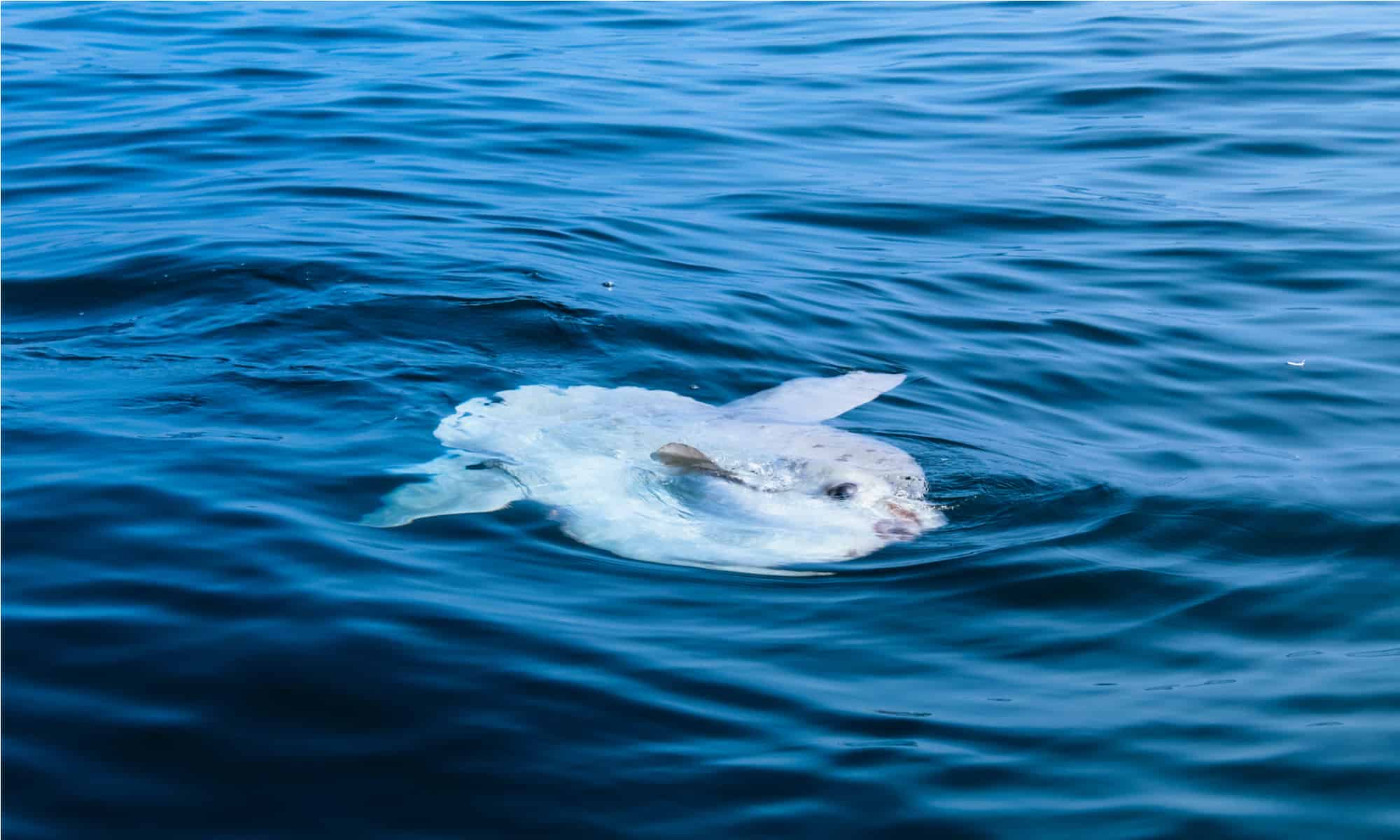
Adult ocean sunfish can weigh up to 5,000 pounds.
©Anna K Mueller/Shutterstock.com
The winner on our list of animals that have the most babies is a very unique fish! Also known as the mola, the odd-looking ocean sunfish (Mola mola) is a huge bony fish found in near-shore oceans around the world. These impressive fish can weigh up to 5,000 pounds. But size isn’t the only thing big about these fish: The number of eggs they lay is equally gigantic.
Female sunfish produce up to 300 million eggs in one spawning season. The 1-millimeter eggs are released into the ocean where they are externally fertilized. However, life isn’t easy for the tiny fry once they hatch. Only about two in 300 million eggs make it to adulthood, (at which point they will be 60 million times larger than when they hatched!).
Despite the immense number of eggs that are produced, this low survival rate (coupled with unintentional culling by fisheries targeting other fish species), the ocean sunfish is on the decline, and populations have been depleted in some regions. As a result, the species is listed as vulnerable by the International Union for the Conservation of Nature.
Summary of 8 Animals That Have the Most Babies
| Rank | Animal | Number of Babies |
|---|---|---|
| 1. | Ocean Sunfish | 300 million eggs per spawning season |
| 2. | Driver Ants | 3-4 million eggs every 25 days |
| 3. | American Bullfrog | 20,000 eggs per breeding season |
| 4. | Seahorse | 1,000 babies per brood |
| 5. | Hawksbill Turtle | 200 eggs per clutch |
| 6. | Tailless Tenrec | 32 babies per litter |
| 7. | Naked Mole Rat | 30 babies per litter |
| 8. | Gray Partridge | 22 eggs per clutch |
The photo featured at the top of this post is © JMrocek/ via Getty Images
Thank you for reading! Have some feedback for us? Contact the AZ Animals editorial team.






